The lone shikara (Kashmiri gondola) carries us silently across the placid surface of Srinagar’s Nigeen Lake to the far shore, where a large number of wooden houseboats are strung out in a line.
We stretch out on colorful recliners under a tarpaulin canopy while behind us a boatman deftly steers us forward with steady strokes from his heart-shaped paddle.
For an instant, the setting sun over the imposing Zabarwan mountain range flashes a welcoming glow onto the row of houseboats before they vanish back into the twilight.
It’s easy to see why this land was once called “Paradise on Earth” by the great Mughal Emperor Jahangir.
But due to a combination of factors, including a lack of skilled artisans to carry on the houseboat tradition, there are signs this unique part of Indian Kashmiri heritage could be dying out.

A glorious past
Srinagar is the largest city in Indian Kashmir and is famous for its extensive network of rivers and lakes.
The origins of the city’s houseboats stretch back into the days of the British Raj – a classic story of necessity being the mother of invention.
The British enjoyed traveling to Kashmir in the summer months to escape the heat and dust of the Indian plains, but the local Hindu maharaja denied them permission to own land.
At the same time, they enjoyed touring the Kashmir valley via the area’s waterways. The idea of a “floating camp” was born.
Kashmiri enterprise and ingenuity took care of the rest and, beginning in the 1850s, the area’s dungas and bahach (cargo boats with open sides) were converted into elaborate houseboats to cater to the needs of the British visitors.
When houseboats first appeared on Kashmiri waterways, they were much smaller (about 40 feet in length) and were poled along the Jhelum River by boatmen or horses from a towpath if the river was high and the current was strong.
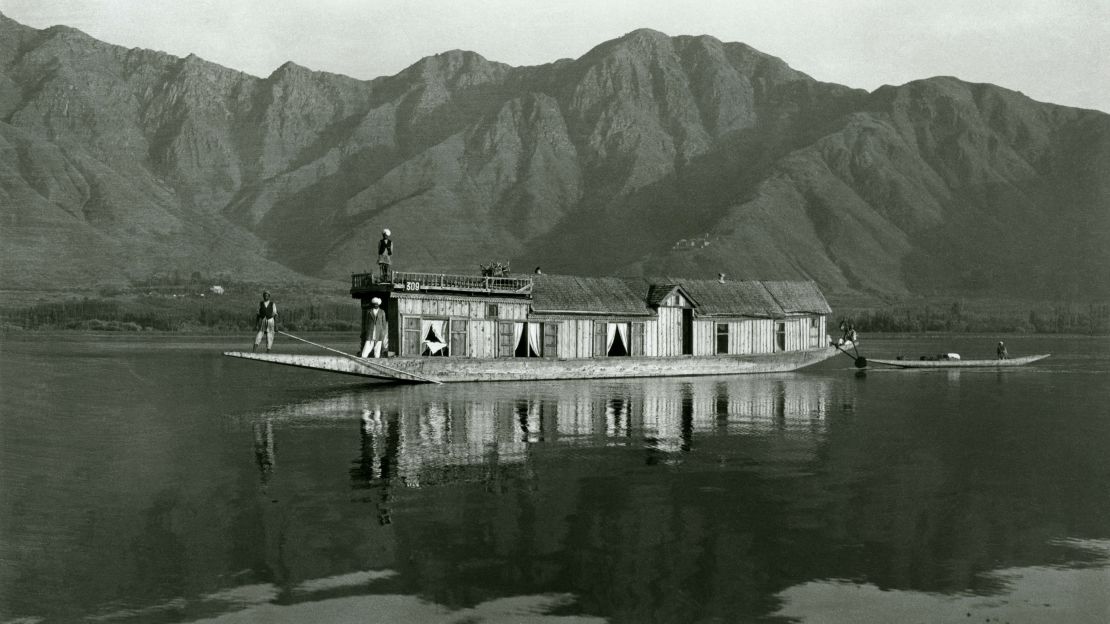
As needs evolved, the visiting British clientele had less time to spend on leisurely holidays and wanted more spacious accommodations. Meanwhile, it became more difficult to negotiate the low bridges across the Jhelum, while silt buildup reduced the steerage depth of the river.
In response, houseboat owners decided to moor them in stationary rows, presenting them as floating – but not traveling – hotels on Srinagar’s Dal and Nigeen Lakes.
When the British left following Independence in 1947, there were fears the houseboat business would die out, but the owners re-purposed them into hotels catering to visiting Indian tourists, marketing them astutely as “floating palaces.”
Then, in the 1960s, the houseboats became a popular draw for internationals travelers on the so-called “Hippie Trail,” an overland route between Europe and Southeast Asia.
Srinagar’s houseboats were given a new lease of life.
The present experience
For visitors to Indian Kashmir, the houseboat experience Is considered unmissable – like staying in a haveli mansion in Rajasthan or a villa in Goa.
They come in all kinds of shapes and sizes – we chose the premium version, which has four bedrooms (each with an attached bathroom), a pantry, dining room, living room and a balcony overlooking the lake.
Climbing up the lowered stairs from the shikara is like stepping into a salon of the finest Kashmiri artisanship, a space filled with gorgeous silk carpets, furniture and accessories with intricate designs carved from walnut wood, crewel curtains and embroidered bedcovers.
Overlooking it all is an elaborate khatambandh ceiling made from hundreds of small wooden pieces fitted together in an attractive geometric pattern – all crafted by hand, with no nails used.
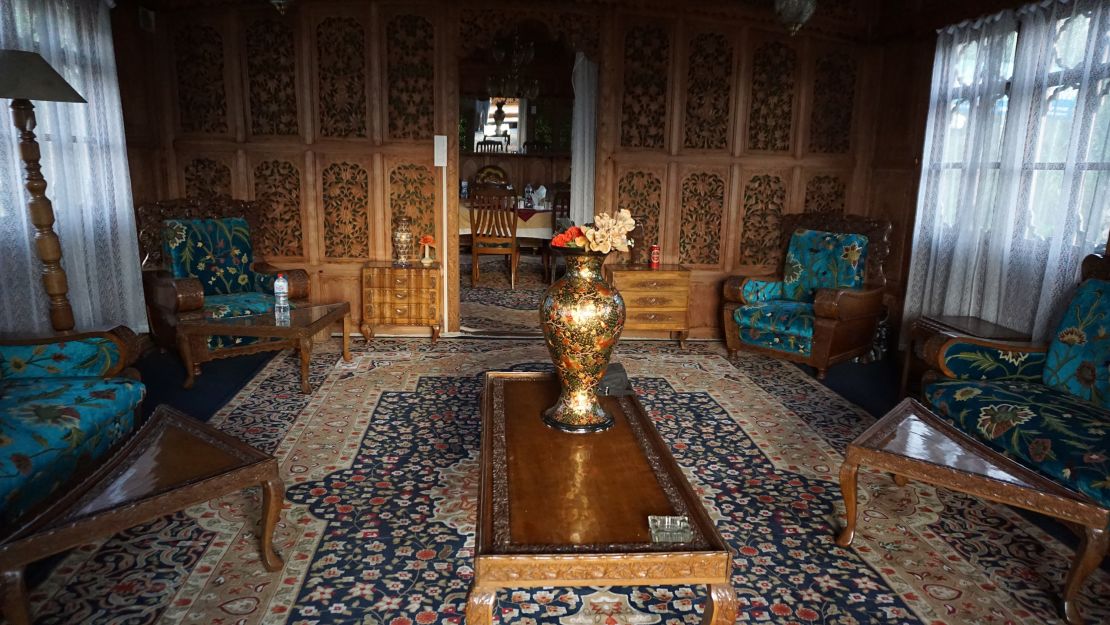
Dinner is laid out on the ornately carved walnut table, a sumptuous spread of Kashmiri delicacies like pilau, seekh kebab, mutton yakni, fried lotus root and stewed quince apples.
The feeling of staying on a houseboat is similar to being in a luxury coach on a train, with each bedroom self-contained and opening onto a corridor that runs along the side of the boat.
The best seats in the house are undoubtedly the divans on the balcony, which is open on all sides and looks out over the lake.
It’s here that we find fellow guest and Bangalore visitor Sharmila Senthilraja curled up with a book and staring pensively out at the peaceful vista spread before her.
“The slow, beautiful awakening of dawn spreading a gossamer silver on the mirrored surface of the lake has a breathtaking beauty that cleanses one’s soul,” she says of the experience.
Just three houseboat craftspeople left
“Houseboats have been in our family for five generations,” says host Farooq Wangnoo, the owner of this heritage houseboat.
“They are a unique part of Kashmir culture and heritage but now we face many threats to our existence.”
Among these is a ban on new construction, which has dried up business for the master craftspeople who used to build these vessels.
According to Wangnoo, there are only three people left in Srinagar who have the special skills needed to select the wood and craft these works of art.
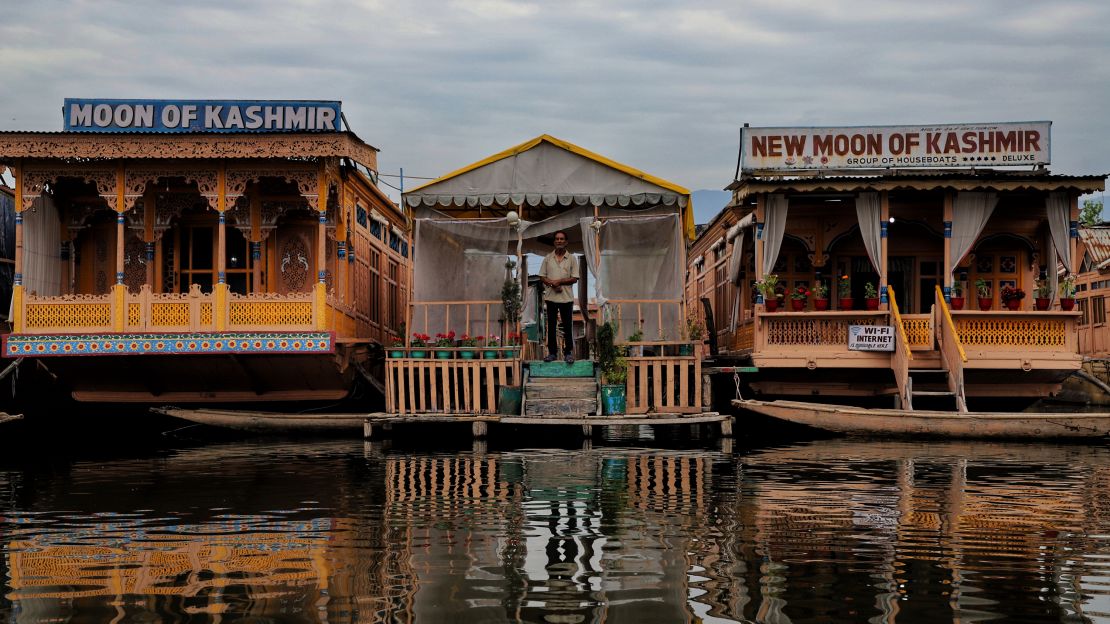
Houseboats are built entirely from deodar (Indian cedar) wood, which is found in abundance all over the region. It’s suitable for the boats as it can sustain immersion in water over long periods of time.
Interestingly, the flat hull is first laid out on land and then pushed out onto the water before the wooden walls and roof are placed on top. A six-foot gap between the floor and the hull provides just enough space for someone to climb down and apply a regular caulking to the deodar planks to avoid leaks.
Wangnoo says his boat was first commissioned in 1984 and took 18 months to build, with 20 craftspeople working every day.
An uncertain future
Tourism is an important industry in Indian Kashmir, and it has suffered greatly over the last 30 years due to the political instability and violence that has torn the valley apart.
As a mainstay tourist experience, houseboats were bound to be affected and their numbers have declined from 3,000 in the 1970s to just over 900 – the combined total on Dal and Nigeen Lakes.
Today the larger issue that has both the government authorities and the boat owners extremely worried is the pollution and rampant weed infestation of Dal Lake due to untreated sewage discharge from the communities that live in and around the lake, according to the state’s Lakes and Water Development Authority (LAWDA).
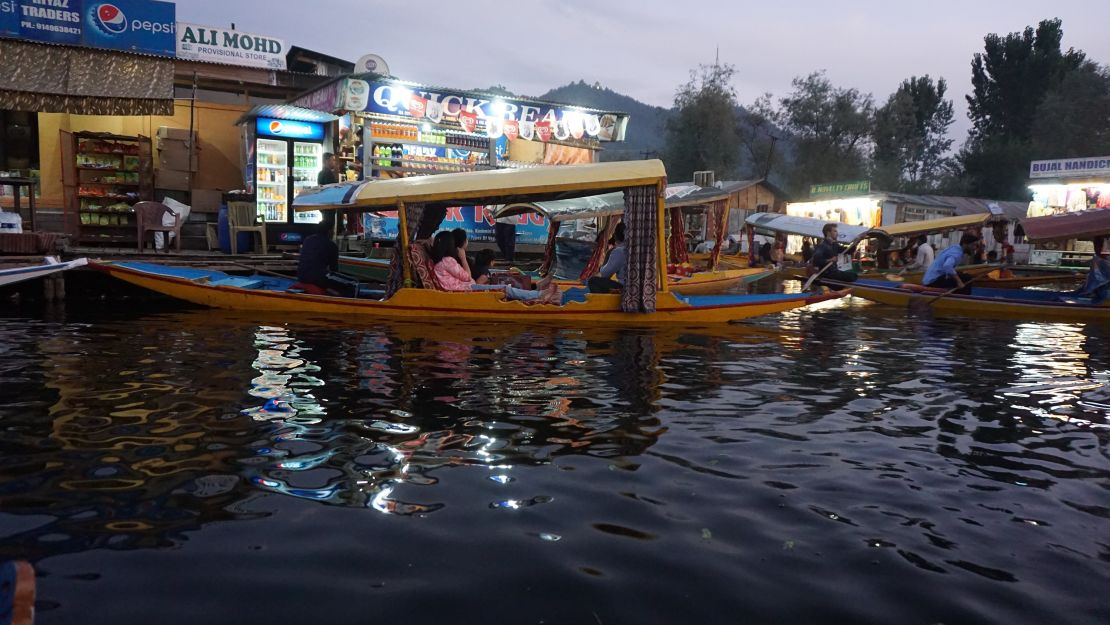
In 2010, a High Court order was passed banning any new construction activity around the lake, which included houseboats, even though their contribution to the pollution is generally agreed to be less than 5%.
The relationship between the Hanji (or dwellers of water) houseboat owners and the government is riven by mutual suspicion and distrust. Sociologically, the Hanjis were always regarded as being outside the formal Kashmiri caste structure from which the bureaucrats came.
Nomadic in their lifestyle, they were hampered by a lack of proper political representation and poor education. However economically the Hanjis have prospered as they plied their trade on the waterways of Kashmir.
“We are more visible simply because we live in the lake and have become a soft target for tough government directives on pollution,” says Yaseen Tuman, an articulate spokesman for the Hanji cause and owner of a fleet of luxury craft.
But there are some reasons to be hopeful.
A new houseboats policy announced by LAWDA and the Department of Tourism in May 2021 grants owners permission to renovate and refurbish their properties, although owners face a lot of bureaucratic red tape including a requirement that calls for owners to obtain numerous NOCs (no-objection certificates) from several departments.
“We have a two-prong approach whereby either the houseboat has to be fitted with a bio-digester or similar scientific equipment to clean up their waste or they will be linked through pipes to one of five sewage treatment plants on the land,” says Bashir Bhat, the new vice-chancellor of LAWDA.
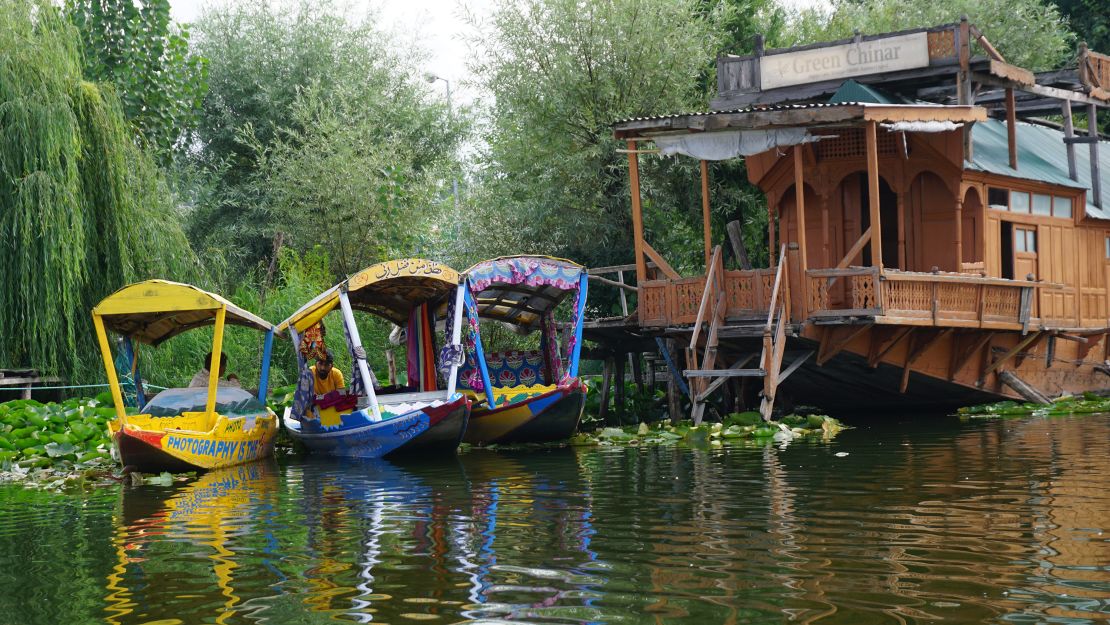
There is also a controversial plan to thin out the main collection of houseboats moored on Dal Lake and move some of them to a new designated area. The plan has been submitted for an environmental impact assessment study by Kashmir University.
Everyone involved agrees on the paramount need to save Dal Lake and, associated with that, the houseboats which are an integral part of Indian Kashmir’s cultural legacy.
The problem is there are major differences of opinion on how to achieve this.
It could be argued the Hanjis have not endeared themselves to the larger public by focusing too narrowly on their own economic interests. But now they are waking up to the broader picture and a recent big success story is the clean-up of two smaller water bodies, Gilsar and Khushalsar lakes.
The Gilsar effort was spearheaded by Manzoor Wangnoo, a former chairman of the Kashmir Houseboats Association who helped spur widespread community involvement, inspiring the Indian Kashmir administration to follow up with Khushalsar.
“If all of us Kashmiri stakeholders work together for the common good then miracles can be achieved to preserve the beauty of this land that Allah gave us,” the passionate Hanji leader tells CNN as he sips a steaming hot cup of sweet kahwa (Kashmiri green tea).
Top image: Shikara owners wait for customers on the world-famous Dal Lake in Srinagar on April 24, 2021. Credit: Nasir Kachroo/NurPhoto/Getty Images
